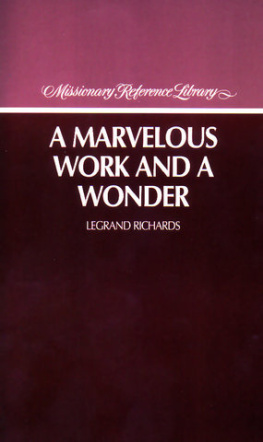
FOREWORD
by Amy Sherman-Palladino
I
ts time to bring back Pink. Donna Zakowska stood
in her studio on the third floor of Steiner Studios, a
magic room of hats and shoes and skirts and gloves,
dressed all in black, like a ninja, explaining the reason-
ing behind her proclamation. Midges coat in the pilot
was pink. In the pilot she was with Joel. When they broke
up, the pink was gone. But now that Midge seems to be
finding her way forward againwere bringing back
pink. Of course it will be a different pink, because shes a
different girl, but it will be pink.
Pink tells a story.
The Marvelous Mrs. Maisel
is the show I have been
waiting my whole life to do. I wanted it to be a big show.
I wanted to revisit the New York that I had heard
about from my parents. To bring to life the tales of the
Greenwich Village basket houses and the Catskills hotels
my father worked at as a stand-up comic. And to accom-
plish this task I needed several things: unbreakable
actors, the crew of the gods, production design conjured
by wizardsand costumes. Marvelous, beautiful cos-
tumes. Costumes that move and dance.
Costumes that tell a story.
So into my life walked a tiny woman who would haunt
my dreams. And my stories.
Donna Zakowska is uncompromising. Her designs are
specific and theres a reason for every button, every
pocket. Everything must be perfect. And not just for our
star, Rachel Brosnahan, or our leading actors, but for
every single person on our show. She marches up and
down the lines of extras, sometimes hundreds of them,
inspecting every detail, correcting every flaw, for every
scene we do. Button that. Dont take the hat off, I told
you that. You have gloves? Where are your gloves?
Whats in your pocket? Why? I dont care if its your
life-saving medication, its ruining the line of your suit.
Throw it out. Okay, the last one never happened, but it
could. And frankly she would be right.
Nothing escapes her eye. Shes a perfectionists per-
fectionist. For Miami she created a sort of bubble sun
romper, inspired by some pictures of Miami in the
fifties, that looked like beach balls with great legs walk-
ing around on the beach. Ridiculous and fabulous. She
makes costumes that are dreamy, funny, sexy, insane...
everything that I need this show to be.
Her clothes can be frilly, flirty, sad, or defiant. There are
coats that feel like superhero capes and hats that feel like
crowns or cherries on top of a sundae. And every one of
them is like nothing youve ever seen before.
I have given Donna many nicknames over the last five
years. My two favorites being Generale and Genius.
And because she is a professional, and a cool lady, she
has tolerated these nicknames with a mixture of bewil-
derment and probably a little annoyance. But hopefully
she understands they are meant with great love, affec-
tion, and admiration.
And quite a bit of gratitude for giving her all... to help
me tell my story.

I
grew up with my mother and grandmother in an old nine-
teenth-century house in Vinegar Hill, Brooklyn, regularly
descended upon by a bevy of Italian aunts, at the center of
a constant flurry of social events and holiday celebrations. And
my mother embraced each change of season and holiday as if
decorating and dressing for the occasion were essential obliga-
tions of daily life. The house was decked with metallic silver
icicles in the winter, then red velvet roses, tulips in the spring,
autumn leaves and pumpkins in the fall. It sometimes felt like
living in a giant window display, with heaps of fabric flowers
and ornament boxes in constant rotation from the basement.
Amidst the various household decorations, my mother also
regularly conjured up boxes of clothing and hats, and I took par-
ticular pleasure in donning my grandmothers vintage clothing.
My mother was an unwavering believer in the power of adorn-
mentand the idea that, whatever the circumstances of ones
life, one should never abandon the commitment to beautifica-
tion and embellishment, either of ones surroundings or oneself.
On one of my first films, Carl Franklins One True Thing , my
mothers guiding principle was very much in my thoughts
when I was designing the costumes for Meryl Streeps char-
acter, Kate, who was diagnosed with cancer and unwilling to
succumb to its effect on her outward appearance. We created
a wardrobe rich in holiday clothing and accessorieslike
Christmas corsages and sweaterswith attractive, uplifting
details to express her unrelenting celebration of daily life in the
face of adversity. The headscarves she wore in the aftermath
of her cancer treatments were made from very special Italian
silks and wools, and I remember being amazed by the number
of women who reached out to me afterward wanting to find
these scarves for themselvesan armation, I thought, of my
mothers belief.
Years later, then, in one of my first meetings with the creator
























